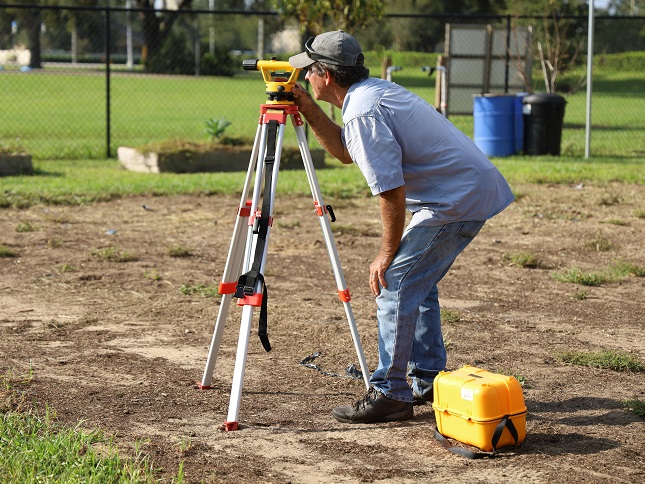Why is professional land surveying crucial before construction? How does it contribute to the success of your project? What steps are involved in the surveying process? When starting any construction project, whether it’s a small residential development or a large-scale infrastructure endeavor, professional land surveying stands as a critical initial step.
What exactly does this process entail, and how does it contribute to the success and safety of construction projects? In this article, we’ll explore the essential steps in professional land surveying for construction, highlighting the significance of each step to ensure a smooth and compliant building process.
Understanding the Role of Land Surveying
A surveying company specializes in the precise measurement and mapping of land features using advanced technology and techniques. These companies employ trained professionals who ensure accurate data collection for various projects, from construction to land development and environmental assessments. Their expertise in surveying plays a crucial role in providing essential information that guides decision-making processes and assures adherence to legal and regulatory requirements.
Land surveying goes beyond mere measurement; it provides crucial data and insights that influence every phase of a construction project. Why are accurate measurements so crucial in construction? How do surveyors prevent legal disputes? What technologies are used in modern land surveying? These questions underscore the importance of surveying in ensuring that construction projects are executed accurately, legally, and safely.
Land surveyors use refined equipment and techniques to gather precise measurements and data about the land. This information is then used by architects, engineers, and construction teams to plan and execute their projects effectively.
Key Steps in Professional Land Surveying
1) Initial Research and Planning
Before setting foot on the site, land surveyors conduct comprehensive research. This includes reviewing historical records, deeds, and previous surveys to understand property boundaries and any potential discrepancies. The goal is to establish a clear understanding of legal parameters and ownership rights, ensuring compliance with zoning laws and minimizing legal disputes during construction.
Surveyors also assess the terrain and environmental factors that may affect construction, such as soil stability and drainage patterns. This initial research phase lays the groundwork for accurate fieldwork and data collection.
Initial Site Assessment
- Surveyors visit the site.
- Assess the land’s condition.
- Identify visible issues.
2) Fieldwork and Data Collection
Equipped with advanced tools such as GPS receivers, total stations, and drones, surveyors head into the field to gather precise measurements. GPS technology facilitates accurate positioning, while drones provide aerial views and rapid data acquisition capabilities. Surveyors meticulously document natural features, terrain variations, and man-made structures, laying the groundwork for detailed mapping and analysis.
During fieldwork, surveyors may encounter challenges such as difficult terrain or adverse weather conditions. Their expertise allows them to adapt and utilize the best methods for collecting accurate data that will inform subsequent phases of the construction project.
3) Data Analysis and Mapping
Back in the office, surveyors process the collected data using specialized software. This includes creating topographical maps, contour maps, and digital elevation models (DEMs) that accurately depict the site’s landscape and features. Geographic Information System (GIS) software enhances data analysis capabilities, allowing surveyors to overlay additional information such as soil types and drainage patterns.
Data analysis is a critical step that transforms raw survey data into actionable insights. Surveyors analyze the data to identify potential challenges or constraints that may impact construction, ensuring that the project is planned and executed efficiently.
Steps in Topographical Surveying
- Data Collection: Surveyors gather data on the land’s contours, natural and man-made features, and elevations.
- Mapping: The collected data is used to create detailed maps and 3D models.
- Analysis: Surveyors analyze the maps to identify potential issues and opportunities for the construction project.
4) Boundary Marking and Verification
To ensure legal compliance and prevent encroachments, surveyors mark property boundaries with physical monuments or markers. This step involves precise measurements and coordination with landowners and legal authorities to establish and verify property lines. Clear boundary marking provides certainty and prevents disputes with neighboring properties throughout the construction process.
Boundary marking is not just about placing markers; it involves careful verification and documentation to ensure all parties involved understand and agree on property boundaries. This assertive approach minimizes the risk of disputes and litigation during and after construction.
Boundary Determination
- Define legal property limits.
- Prevent boundary disputes.
- Use in legal documentation.
5) Consultation and Reporting
Effective communication is crucial in land surveying, as surveyors collaborate with various stakeholders, including landowners, architects, engineers, and local authorities. Survey findings are presented in detailed reports that outline key measurements, observations, and recommendations for the construction team. This collaborative approach ensures alignment and facilitates informed decision-making throughout the project lifecycle.
Consultation with stakeholders allows surveyors to manage any concerns or questions that may arise from the survey findings. Clear and concise reporting ensures that everyone involved in the project understands the essence of the survey data and can make informed decisions accordingly.
Identifying and Addressing Legal Issues
Legal issues can arise from inaccurate boundary definitions or non-compliance with zoning laws. Surveyors help identify these issues early, providing necessary documentation and advice to address them.
Importance of Legal Compliance
- Avoiding Fines: Non-compliance can result in hefty fines.
- Preventing Delays: Legal issues can halt construction.
- Ensuring Smooth Process: Compliance ensures a smooth construction process.
Ensuring Compliance with Zoning Regulations
These regulations dictate how land area can be used. Surveyors ensure the construction project complies with these regulations, which helps avoid legal troubles and project delays.
Benefits of Compliance
- Legal Safety: Ensures the project is legally sound.
- Project Continuity: Prevents interruptions due to non-compliance.
- Community Acceptance: Aligns with community planning and use standards.
Preventing Future Disputes
Proper surveying prevents disputes over land ownership and boundaries. It provides a clear, legal definition of property lines that can be referenced in the future.
How Surveying Prevents Disputes
- Clear Boundaries: Defines precise property limits.
- Legal Documentation: Provides evidence in case of disputes.
- Mutual Agreement: Ensures all parties agree on boundaries.
Facilitating Accurate Design and Planning
Accurate surveying data is crucial for architects and engineers. It provides the foundational information needed to design structures that fit the terrain and comply with regulations.
Benefits of Design and Planning
- Precision: Ensures design accuracy.
- Feasibility: Helps in planning realistic structures.
- Efficiency: Reduces the need for redesigns.
Enhancing Safety and Reducing Risks
Surveying identifies potential hazards such as unstable ground or flood-prone areas. This information is vital for planning safe construction practices and reducing risks associated with building on the land.
Safety Measures from Surveying
- Hazard Identification: Spots potential safety risks.
- Risk Mitigation: Provides strategies to address hazards.
- Safe Construction Practices: Ensures building safety from the start.
Technologies and Innovations in Land Surveying
Technological advancements have revolutionized land surveying, enhancing accuracy, efficiency, and safety in construction projects. Modern surveying tools and techniques include:
- Global Navigation Satellite Systems (GNSS): Provides precise positioning and navigation capabilities using satellite signals. GNSS technology allows surveyors to achieve centimeter-level accuracy in positioning, which is crucial for detailed mapping and construction layout.
- Laser Scanning (LiDAR): Captures detailed 3D representations of terrain and structures, allowing for accurate volume calculations and documentation. LiDAR technology is particularly useful in complex terrain or urban environments where traditional surveying methods may be challenging.
- Drone Surveying: Enables rapid aerial data collection and high-resolution mapping, ideal for large-scale projects and inaccessible terrain. Drones equipped with cameras and LiDAR sensors provide detailed imagery and terrain models, significantly reducing surveying time and costs.
- GIS and Remote Sensing: Integrates spatial data to analyze geographic patterns, aiding in environmental assessment and urban planning. GIS software allows surveyors to overlay survey data with environmental or demographic information, providing comprehensive insights for sustainable development.
These technologies streamline surveying processes and enable surveyors to tackle complex challenges with greater accuracy and efficiency, ultimately contributing to the success of construction projects.
Conclusion
Professional land surveying is integral to the success and safety of construction projects, providing essential data and insights that guide decision-making and ensure regulatory compliance. From initial research and fieldwork to data analysis and boundary marking, each step in the surveying process plays a crucial role in minimizing risks and optimizing project outcomes.
As technology progresses, the role of a surveying company remains pivotal in shaping the built environment and supporting sustainable development. By embracing innovation and maintaining rigorous standards, surveyors uphold their commitment to accuracy, integrity, and excellence in the construction industry.









































